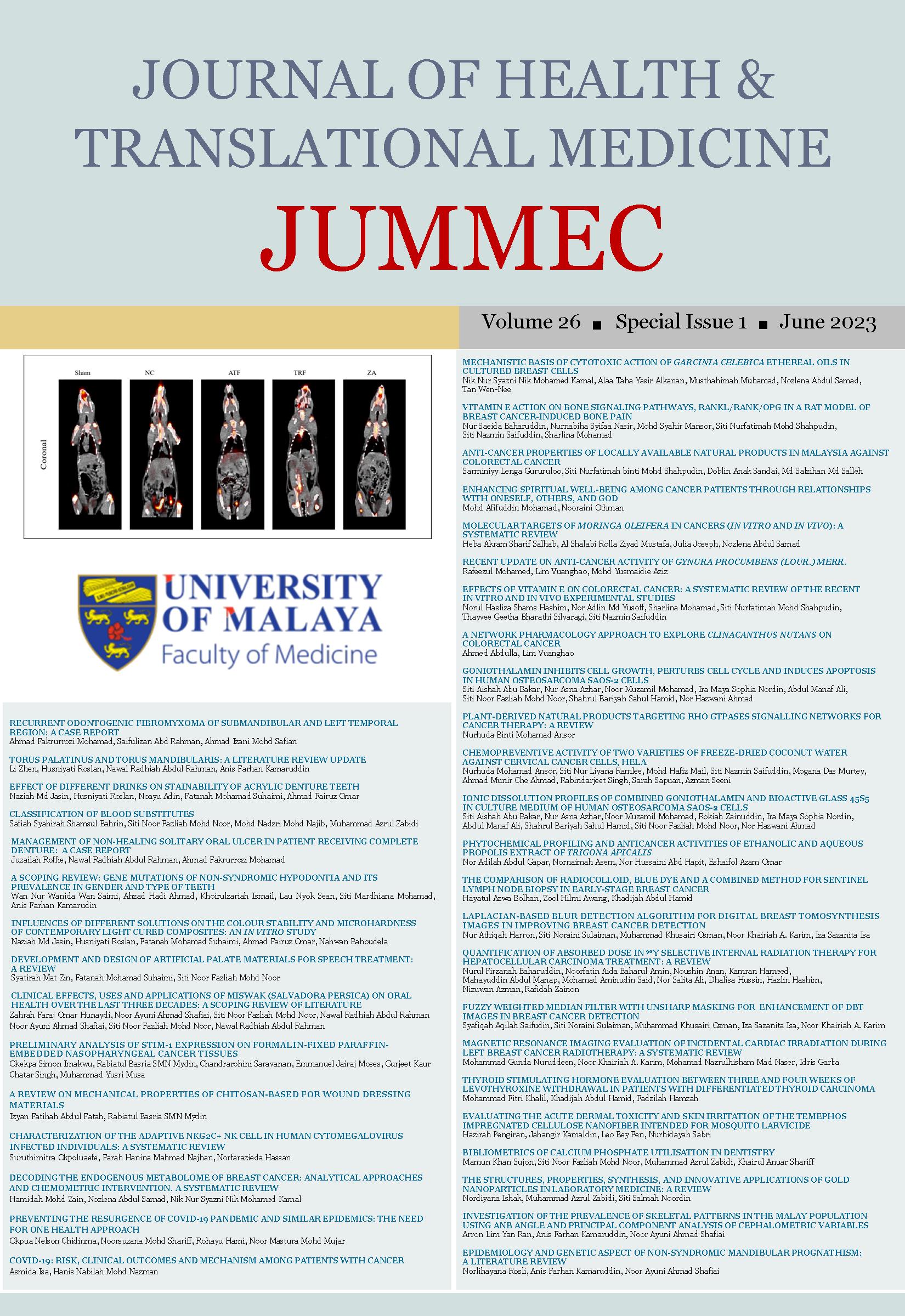LAPLACIAN-BASED BLUR DETECTION ALGORITHM FOR DIGITAL BREAST TOMOSYNTHESIS IMAGES IN IMPROVING BREAST CANCER DETECTION
Received 2023-01-09; Accepted 2023-03-21; Published 2023-06-06
DOI:
https://doi.org/10.22452/jummec.sp2023no1.15Abstract
The most challenging aspect of working with digital images captured in an uncontrolled environment is to
determine whether the image is of sufficient quality to be studied further. One of the most frequent reasons for a
decrease in the quality of digital images is the presence of blur artefacts, especially when the images are taken
from various angles of the x-ray source with limited angular range such as in digital breast tomosynthesis (DBT).
The unwanted artefacts might substantially obscure the breast cancer location, especially in extremely dense
fibroglandular breast tissue. It is almost impossible to differentiate breast cancer lesions in blurry and lowcontrast DBT images, thereby reducing the accuracy of lesion diagnosis. Due to this blurry artefact issue, this
study aims to assess the performance of Laplacian-based Blur Detection (LbBD) algorithm for the blurry detection
of DBT images. The LbBD algorithm is designed and developed using MATLAB R2021a software. The algorithm
identifies the amount of blurriness by calculating the image variance; the farther the variance is from the
threshold value, the less blurry is the image. On the contrary, the lower the variance level is from the threshold
value, the greater the blur level. An online survey was conducted with an expert to assess the quality of 20 DBT
images using two subjective measurements of blur or non-blur to ascertain the algorithm's performance. Three
threshold values were used to compare the outcome with the output of the algorithm's status. With a low error
rate (0.05), an accuracy of 95% at the ideal threshold value of 200, and an image size reduction of 10%, the
system successfully predicts blurry images.
Downloads
Downloads
Published
Issue
Section
License
All authors agree that the article, if editorially accepted for publication, shall be licensed under the Creative Commons Attribution License 4.0 to allow others to freely access, copy and use research provided the author is correctly attributed, unless otherwise stated. All articles are available online without charge or other barriers to access. However, anyone wishing to reproduce large quantities of an article (250+) should inform the publisher. Any opinion expressed in the articles are those of the authors and do not reflect that of the University of Malaya, 50603 Kuala Lumpur, Malaysia.


